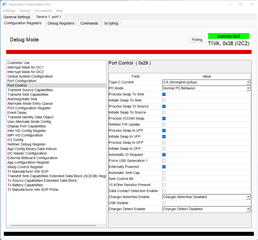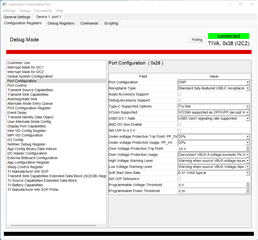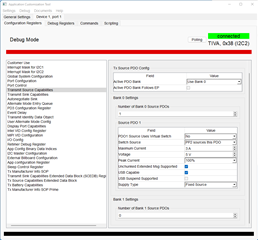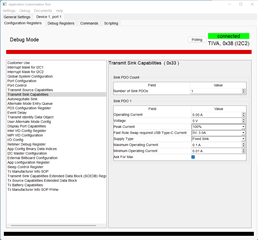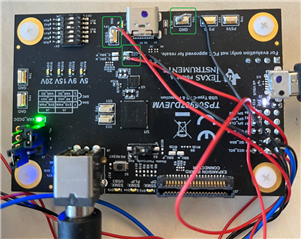Other Parts Discussed in Thread: TPS65987DJEVM, TPS65987, TPS65987D
Hi,
I'm evaluating TPS65987DDJ capabilities using TPS65987DJEVM evaluation board which is connected to an iPad has a builtin USB-C port.
I want the evaluation board to be configured as a Sink device requires 5V and 100mA only.
And iPad will be forced to be a Host in this case.
I managed to have above configuration using TPS65987_8_HOST Application Customization 6.2.1 and following steps in the pictures:
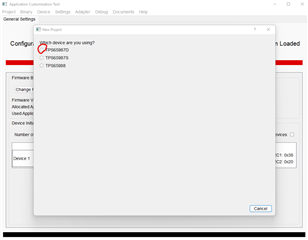
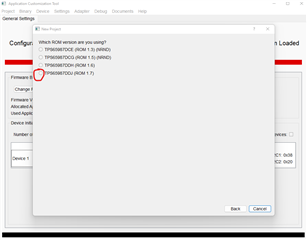
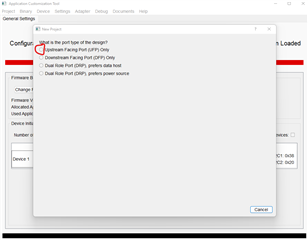
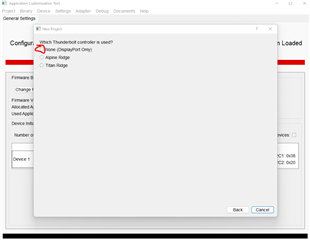
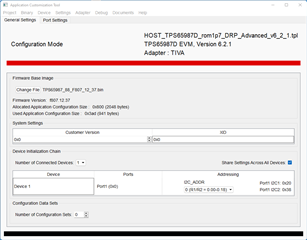
After that I created a Full Flash Image and burned it into the external Flash memory using TIVA on the eval board. After a power cycle, I observed that new settings are activated and TPS65987DDJ behaves as expected.
So far so good.
Now I want to send some I2C commands to the eval board at runtime to change the behavior of it from Sink device to a source device. I meant that the eval board Data role should remain same as a device but power role should be changed to a Source so that I can see that iPad starts being charged from the eval board without losing existing data communication on the USB data lines.
What I have tried simply is that in the Application Customization Tool -> enabled the Debug mode then Device 1, port1 tab -> Commands tab- > Swap to Source in the listbox, Click Execute SWSr, but nothing changed. (the eval board is still sink?)
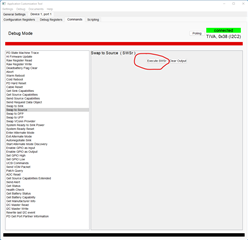
How can I achieve my objective?
Regards,


